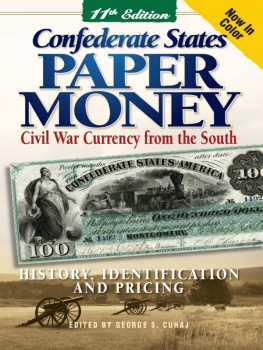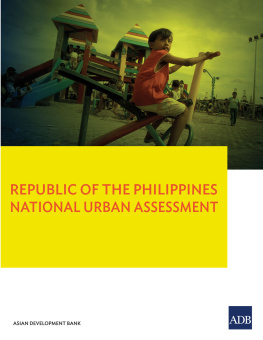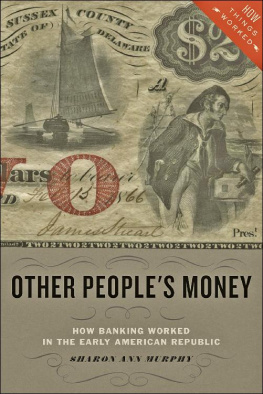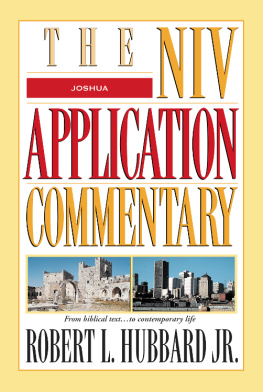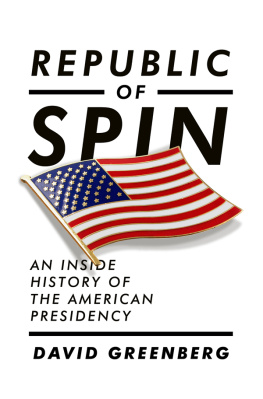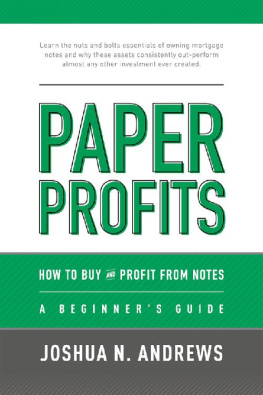Joshua R. Greenberg - Bank Notes and Shinplasters: The Rage for Paper Money in the Early Republic
Here you can read online Joshua R. Greenberg - Bank Notes and Shinplasters: The Rage for Paper Money in the Early Republic full text of the book (entire story) in english for free. Download pdf and epub, get meaning, cover and reviews about this ebook. year: 2020, publisher: University of Pennsylvania Press, Inc., genre: Science. Description of the work, (preface) as well as reviews are available. Best literature library LitArk.com created for fans of good reading and offers a wide selection of genres:
Romance novel
Science fiction
Adventure
Detective
Science
History
Home and family
Prose
Art
Politics
Computer
Non-fiction
Religion
Business
Children
Humor
Choose a favorite category and find really read worthwhile books. Enjoy immersion in the world of imagination, feel the emotions of the characters or learn something new for yourself, make an fascinating discovery.
- Book:Bank Notes and Shinplasters: The Rage for Paper Money in the Early Republic
- Author:
- Publisher:University of Pennsylvania Press, Inc.
- Genre:
- Year:2020
- Rating:4 / 5
- Favourites:Add to favourites
- Your mark:
- 80
- 1
- 2
- 3
- 4
- 5
Bank Notes and Shinplasters: The Rage for Paper Money in the Early Republic: summary, description and annotation
We offer to read an annotation, description, summary or preface (depends on what the author of the book "Bank Notes and Shinplasters: The Rage for Paper Money in the Early Republic" wrote himself). If you haven't found the necessary information about the book — write in the comments, we will try to find it.
Bank Notes and Shinplasters: The Rage for Paper Money in the Early Republic — read online for free the complete book (whole text) full work
Below is the text of the book, divided by pages. System saving the place of the last page read, allows you to conveniently read the book "Bank Notes and Shinplasters: The Rage for Paper Money in the Early Republic" online for free, without having to search again every time where you left off. Put a bookmark, and you can go to the page where you finished reading at any time.
Font size:
Interval:
Bookmark:

AMERICAN BUSINESS, POLITICS, AND SOCIETY
SERIES EDITORS
Andrew Wender Cohen, Shane Hamilton, Kimberly Phillips-Fein, and Elizabeth Tandy Shermer
Books in the series American Business, Politics, and Society explore the relationships over time between politics, society, and the creation and performance of markets, firms, and industries large and small. The central theme of this series is that culture, law, and public policy have been fundamental to the evolution of American business from the colonial era to the present. The series aims to explore, in particular, developments that have enduring consequences.
A complete list of books in the series is available from the publisher.

SHINPLASTERS
THE RAGE FOR PAPER MONEY
IN THE EARLY REPUBLIC
JOSHUA R. GREENBERG

Copyright 2020 University of Pennsylvania Press
All rights reserved. Except for brief quotations used for purposes of review or scholarly citation, none of this book may be reproduced in any form by any means without written permission from the publisher.
Published by
University of Pennsylvania Press
Philadelphia, Pennsylvania 19104-4112
www.upenn.edu/pennpress
Printed in the United States of America
on acid-free paper
1 3 5 7 9 10 8 6 4 2
Library of Congress Cataloging-in-Publication Data
Names: Greenberg, Joshua R., author.
Title: Bank notes and shinplasters : the rage for paper money in the early republic / Joshua R. Greenberg.
Description: Philadelphia : University of Pennsylvania Press, [2020] | Series: American business, politics, and society | Includes bibliographical references and index.
Identifiers: LCCN 2019045000 | ISBN 9780812252248 (hardcover)
Subjects: LCSH: Paper moneyUnited StatesHistory18th century. | Paper moneyUnited StatesHistory19th century. | United StatesEconomic conditionsTo 1865. | United StatesHistory17831865.
Classification: LCC HG591 .G74 2020 | DDC 332.4/044097309034dc23
LC record available at https://lccn.loc.gov/2019045000
From Madison to Monroe
I N HIS 1815 satire The History of a Little Frenchman and His Bank Notes: Rags! Rags! Rags!, James Kirke Paulding told the story of a newly arrived and thoroughly confused French visitor as he navigated the unique American paper money system. The Frenchman landed in Savannah from Cuba and deposited $8,000 in gold in a local bank. However, they offered only bank notes when he tried to withdraw the funds. He assumed that, like Banque de France notes, the bills were a convenient stand-in for gold or silver and circulated at face value. So, ignorant of the depreciation of paper money, arising from the refusal to pay specie [coined gold or silver], and from the erection of such an infinite number of petty banks in every obscure village without capital or character, he took the worthless rags and set out for Boston.
Each of the Frenchmans subsequent transactions exposed the foreigners inexperience with bank notes and shinplasterspaper money issued by nonbank entities like merchants or municipal corporationsbecause he could not discern which notes were good and which were worthless. In one typical episode, he offered to pay for a drink in a Bristol, Pennsylvania, tavern with a bill issued by the landlord of a Philadelphia hotel where he had previously stayed. His traveling companion explained that the hotelier, in order to be in fashion, had also commenced Banker among the rest. Yet the Bristol landlord refused outright to accept the bill. The rejection upset the Frenchman; how was he to understand the difference between a note issued by a hotel operator or local postmaster and one from the Planters Bank of the State of Georgia?
The problem for the Frenchman was that he did not have enough monetary knowledge to understand how bank notes and shinplasters actually worked, so he blindly received all of them equally. American paper money was more complicated than that. Though at first glance different bills might appear similar, some circulated at face value, others passed only with a discount, and a final group were accepted as currency only by their issuer. When someone finally explained the difference between a tavernkeepers shinplaster and a depreciated bank note, the bewildered Frenchman asked, Does the legislature of your country permit this system of swindling, this inhospitable custom, which falls so heavily on the traveler and stranger, to pass without censure or punishment? If banks or merchants issued notes that only circulated with large discounts or failed to pass at all, how did anyone know which paper money was good and which was bad?
The Frenchmans companion offered a tongue-in-cheek response about the way Americans approached bank note transactions. He explained that it is supposed that every body knows the value of every species of bank paper as well as the credit of every individual who issues notes, and to be ignorant of such things, is only to suffer those consequences which naturally spring from ignorance in every circumstance. The bank note and shinplaster system persisted, but only because everyone supposedly maintained a comprehensive knowledge of all bills and their producers. This was too much for the Frenchman to accept. He threw up his hands and exclaimed, Le diable est aux vaches! (There is the devil to pay!). More than just a satire of perilous market transactions, Pauldings story astutely identified several key aspects of early republic currency: the diversity of circulating paper money, the advantage bankers possessed when they issued notes, the ineffective role of government regulation, and especially the amount of monetary knowledge needed to keep up in the paper money market.
In this book, I investigate the state bank note system that thrived over the nations first seventy-five years as well as the legal tender monetary culture that replaced it during the Civil War era. Early republic paper currency needs to be unpacked because it bears so little resemblance to the modern circulation of Federal Reserve notessometimes called greenbacksthat are printed by the United States government and legal tender for all transactions, public and private. Previous attempts to describe early republic paper currency usually devolve into institutional narratives of banking where the publics daily experiences play little part; cultural histories of capitalism often sidestep the minutiae of monetary policy. This study instead examines how professional bankers, brokers, and carpetbaggers constructed the bank note system to maximize personal gain and how all Americans materially, culturally, and politically utilized that system to navigate the market. The cash economy was not merely imposed on the population, it was negotiated by everyone who used early republic paper money.
Early republic Americans lived experience with paper money forms the narrative and conceptual core of this book. We see how the general public accumulated and wielded the monetary information needed to navigate interpersonal bank note transactions that were influenced by both the quality of their money and their demographic standing in society. Essential to this experience was the material culture of paper money, including the seemingly endless collection of vignettes and symbols on the notes themselves. Noteholders did not, however, just accept bills as they were produced; they manipulated their cash by ripping it, burning it, and scribbling all over it.
Font size:
Interval:
Bookmark:
Similar books «Bank Notes and Shinplasters: The Rage for Paper Money in the Early Republic»
Look at similar books to Bank Notes and Shinplasters: The Rage for Paper Money in the Early Republic. We have selected literature similar in name and meaning in the hope of providing readers with more options to find new, interesting, not yet read works.
Discussion, reviews of the book Bank Notes and Shinplasters: The Rage for Paper Money in the Early Republic and just readers' own opinions. Leave your comments, write what you think about the work, its meaning or the main characters. Specify what exactly you liked and what you didn't like, and why you think so.


